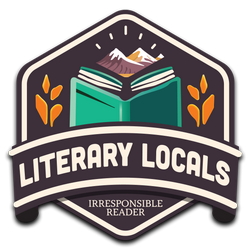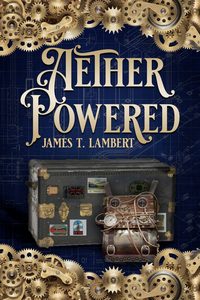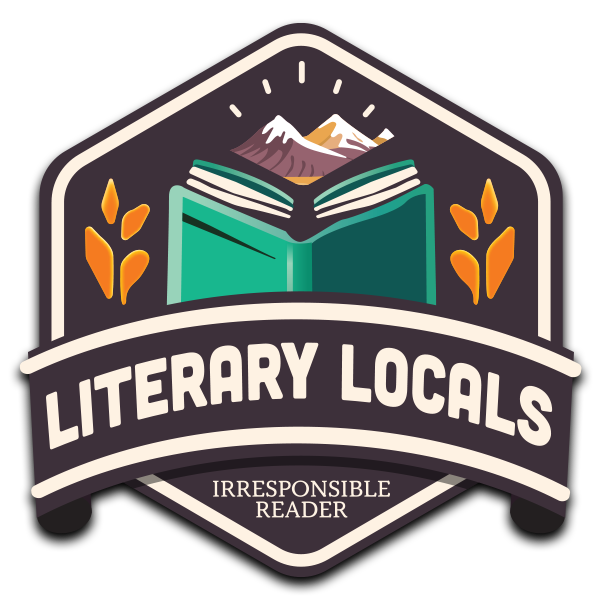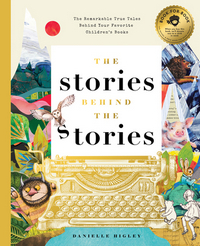 I’ve got a fun Q&A with the author, James T. Lambert, coming up in an hour or so—be sure to come back for it!
I’ve got a fun Q&A with the author, James T. Lambert, coming up in an hour or so—be sure to come back for it!
 Aether Powered
Aether Powered
DETAILS: Publisher: Bert Books Publication Date: January 18, 2022 Format: Paperback Length: 224 pg. Read Date: November 30, 2022

What’s Aether Powered About?
I feel like I’m in danger of just going full-bore “here’s everything that happened in the novel” or not really giving you enough to know what the book’s about. Let’s give it the ol’ college try, though.
Joseph is studying Electrical Engineering and is just scraping by—his gig in the bar can pay the bills and come close to treating his girlfriend, Carol, in the manner she is accustomed to. But there’s no wiggle room in his budget—so when he gets an inheritance from his weird uncle, he could really use some money. Instead, he gets an oddly heavy trunk. Which isn’t going to do much for the huge tax bill he just received that’s going to hit his financial house of cards like a bowling ball.
The trunk is full of odd-looking bits and pieces, strange devices, sketches, and notes from a distant relative who’d collaborated with Nicola Tesla. Joseph doesn’t know what to make of them. He plays around with one a little bit and discovers that it seemingly has anti-gravity properties. Anti-gravity? You don’t have to think too hard to realize this could be the solution to his money problems—and a few other problems as well.
But wait…what was that thing Uncle Harry said about “Malevolent powers are at work…would do anything to secure this…”? Maybe Joesph should’ve paid a bit more attention to that because before he can figure out how to use the device to his advantage, someone tries to take it.
Joesph and Carol find themselves on the run and looking for allies they can trust (and end up finding in the least expected places).
Carol
The charitable way of describing Joseph’s girlfriend is that she’s “a real piece of work.” You know that at one point there had to be something between Carol and Joseph beyond the fact that she’s attractive, but they’ve been together long enough that it’s not evident why. The relationship isn’t in a great place, but when Joseph calls for help—she answers.
She’s out for herself at the same time, but she’s there to help, too. She proves to be both resourceful and creative.
I cannot tell you, however, how much time I spent wondering why Joesph was with her. It’s an interesting choice on Lambert’s part because I can’t imagine a lot of readers are going to warm to her for long. A morally gray protagonist, an anti-hero, or that sort of thing is pretty easy to get behind—some readers are drawn to them. But an unlikeable love interest is harder to accept (at least as I’ve been thinking about it since I read the book, maybe I’ll think of exceptions to this later). I think it’s a gutsy move, and I think it pays off.
The Seafair Pirates
On the other hand, you have the Seafair Pirates…these guys are great. There’s never a moment of doubt about what the reader is supposed to think about them, and I can’t believe a reader isn’t gladly going to fall in line.
Without getting into details they’re a bunch of people from a variety of backgrounds and industries in the Seattle area who like to get together, cosplay as pirates, drink a lot, sing pirate songs (they probably would’ve really gotten into the sea shanty craze of a year or so ago), and generally have fun together. A series of events brings Joseph into contact with them and they also end up proving to be a great source of aid to him in his struggles.
I’m not going to say more from a risk of oversharing, but I’d sign up for another book featuring them with or without Joseph.
The Steampunk Science
Most (not all) Steampunk that I’ve read dips a toe into the science, and explains a little bit of what’s going on in their contraptions, but largely, it can be summed up as: there’s a thing and it works. Not unlike the way that Philip Marlowe turns on a lamp or Kinsey Millhone uses a pay phone—we don’t need to know how electricity lights a bulb or how you can deposit coins into a…you know what? Never mind, that might not be the best example anymore.
The point I was trying to make is that Lambert doesn’t get down into the nitty-gritty to give us an explanation for how the devices from the trunk function. There was a part of me that wondered how our Electrical Engineering major was going to explain everything, and I was a little disappointed that he didn’t. But I got over it quickly—it’d have interrupted the flow of the novel, and honestly, I really don’t care. I just want to know that if he flips this switch and turns that dial, things happen. No one wants a Steampunk à la Tom Clancy.
The trunk isn’t big enough to contain too many devices, so this novel is primarily filled with things we all know and use—but we get a little Steampunk mixed in with smartphones and the Internet. Frankly, I love this combination and would gobble up more like it—from Lambert or anyone else.
So, what did I think about Aether Powered?
I don’t know that I’d consider this book a “cozy” of any particular genre. Although I probably should—it delivers the same sense of fun and warmth. Almost immediately, I had this warm attraction toward the book and Joseph—and ultimately, just about everyone in the novel. I don’t know a better way to describe it. There’s been a lot of talk this year about “cozy fantasy,” “hopepunk,” and things along those lines—and I get the same kind of feel from this book.
There’s some good action, some tense moments, and some believably unsavory characters/groups. But most of the characters you spend time with are the kind you want to see succeed and want to spend more time with because you like them. More than that, this is a fun story—it won’t take you long to see the general outline of the book as a whole, you’ll be pretty sure where you’re going to end up at the end. But it’s a fun ride along the way, and that’s the important part.
Also, as I touched on above—Steampunk tech in our world? Why don’t we see more of this? I’m all for full-on Steampunk novels. But a dash of it in a contemporary setting? It’s a great idea. Aether Powered is worth picking up just for the conceit. That Lambert surrounds this conceit with a good protagonist, rollicking supporting characters, and a fun adventure is a great bonus.
Check this out, you’ll be glad you did.








